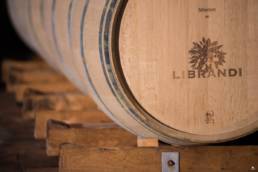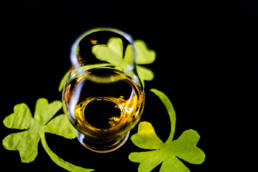FMN – September 2022 – Football Tailgate Wines
As September eases onto the scene, we look forward to the promise of more restrained temperatures and, of course, football. Although I watch all the football games I can (both college and pro), I tend favor the NFL slightly; I’m an emotional slave to my childhood memories. Also, pro football fans, I find, are not quite as crazed as the college enthusiasts, who seem to bleed the colors of their respective teams. I would sooner broach the subject of religion or politics rather than challenge a fan’s belief in their team’s capability.
As we gear up for the start of the season, visions of tailgating and game foods fill our stomachs as well as that Freudian id portion of our subconsciousness. Somehow beer has long been associated with tailgating, and I confess I’ve downed my weight in suds over the years. You do not, however, see much wine filling the bill for game time beverages. I am convinced that this comes from the false pretentiousness associated with the juice of the vine. One of the many Sisyphean hurdles I attempt to overcome with my babblings.
Initially we have to account for the fact that early in the season, especially in the southeastern states, summer has a way of not “going gently into that good night” (for my Dylan Thomas fans). In these cases, I’m all about a light crisp white to help quench my thirst and prime the proverbial pump. One of the most pleasantly acidic grapes that can be made (well) in any wine style is Chenin Blanc. This grape is grown all over the world but many times, domestically, relegated to over cropping and playing a secondary part of bringing acid to a blend of otherwise flabby wines. I love finding varietal domestic Chenin that is actually worth drinking. The acid in these wines not only accentuates the flavors in food but also cleanses the palate between every bite.
You may have noticed there are a lot of people drinking rosé and I happen to be one of them. Although many people and wine ponces tend to wrongfully pigeonhole these wines together, they vary greatly due to the varieties involved, amount of time in contact with skins and method of production (saignée vs. direct press). Truthfully, just about any red variety can be coaxed into a rosé wine but some are just far better suited to the task. Also, I find that location has much to do with stylistic success, as many interesting rosé wines seem to come from grapes grown in volcanic soils.
There are literally hundreds of producers and wines that fit this description but I aspired for a wine drinking above its retail, refreshingly acidic, good with food and from an interesting grape variety. Corsican (aka Île de Beauté) wine, crushes all of the categories and remains virtually unnoticed by our domestic consumers. Unfortunately, this truth has more to do with our belief that we have to pay some nebulous minimum amount for us to consider it a “drinkable” wine. Pretentious, ridiculous and absolutely incorrect.
Moving into some red wine choices, I always try to include a lighter and less-tannic red wine to accommodate those that have a lower threshold of perception to its associated bitterness. Many would choose Pinot Noir here, and that absolutely has merit and would work splendidly, but this trip, I will take the road less traveled with Gamay.
Long thought as just a bastard grape ousted from Burgundy proper by Philippe the Bold, this variety still suffers from centuries old misunderstandings. Beaujolais has historically made incredible wines from Gamay, especially under the “Cru” designations but Gamay has transcended these boundaries. It has enjoyed longevity throughout the Loire Valley with varied success. Gamay, however, is not a “rare” variety as evidenced by this grape being the seventh most planted red in all of France and surprisingly the second most in Switzerland. Today the Gamay grape has seen plantings from Australia and New Zealand to the Eastern European countries of Bulgaria and Macedonia. Domestically Gamay has popped up in Michigan, New York and Texas but Oregon boasts some of the greatest successes. Wherever you can find it, I encourage you to experience this variety.
For those that will always defer to a fuller and more sturdy red, regardless of the temperature, food or situation, I have a wine for you as well. Many will go to their old standby here, whatever that may be but for food and football grub, I strongly encourage Spanish reds, especially Tempranillo. This variety can be found scattered in minute amounts in many countries but Spain is the soulful home of this variety.
Usually lower in alcohol than its oft blended partner Garnacha (Grenache), Tempranillo in no way produces weaker wines. The variety takes well to both American and French oak but does not need it to become noteworthy. When in the hands of a master, these wines can be complex, elegant, and powerfully restrained all at the same time. The tannin structure, though evident, is rarely obtrusive and this variety’s ability to pair with foods is almost unparalleled amongst its red wine brethren.
So, whether you are headed out for your tailgate party or just grilling on the deck for your moteliest of football crews, man up and pour some wines for your laundry-sharing friends. Remember, we are helping to remove that pretentious air associated with wine consumption so drinking right from the bottle is completely acceptable.
Suggested Wines:
Three by Wade Chenin Blanc Clarksburg, California $20
The grapes are grown in Clarksburg and shipped to Napa for the magic to occur. This Chenin has aromas of tropical (pineapple), melon rind, citrus blossom, a lemon/lime character with a slight green peanut note. The palate is dry with a crescendo aspect to the acidity and a medium body. The alcohol is refreshingly low (13.1%) in a region (and with a grape) that could easily see above 14% abv. The finish runs in the medium range and is bright and tangy. This wine cries for food so we can give it lemon caper chicken or, as a tailgate, marinated shrimp, (aka skrimp for my low country friends).
Pinia Île de Beauté Rosé 2021 Corsica, France $18
This 70% Sciaccarellu(o), aka Mammolo, and 30% Grenache based sturdy rosé hails from the Island of Corsica. The nose is blissfully aromatic with tropical citrus (blood orange), orchard fruit (peach skin), red fruit (strawberry) and a slight hint of sea spray. On the dry palate, one first notices the mouth-watering persistent acidity that creates a backbone that all other elements “hang on.” There are flavors of tropical citrus (tangerine), citrus pith, peach, brambly red fruit and an ocean sea spray element. The finish lingers with a slight pleasantly bitter brined citrus aspect that begs for food or the hope of a lingering summer evening. Pair with your slow-cooked pork shoulder or game day BBQ chicken off that natural charcoal grill.
Le Coeur de la Reine 2020 Touraine, France $15
This 100% Gamay has interesting aromas of both candied and rich ripe red fruit. There are elements of Bing cherry, raspberry, currant, watermelon jolly rancher, and a slight hint of milk chocolate. The palate is dry with tart crunchy acidity and medium body. The carbonic maceration gives us the lighter bubblegum and candied fruit elements but there is a darker fruit element as well which adds a complexity, including some spice (stem inclusion?). Although there is some perception of tannin, they are fine-grained and ripe. This is a fun wine that checks a lot of boxes, including great with food, non-pretentious and inexpensive. Pair this wine with those wings out of the air frier (I’m converted), or that tray of cured meats that you and your friends will be grazing on during pre-game.
Abadía la Arroyada Crianza 2019 Ribera del Duero, Spain $16
This 100% Tempranillo wine demonstrates why I especially love “family” smaller production Spanish wines. This deep ruby color displays aromas of dark berry (blueberry, blackberry), purple floral element, baking spice and a fresh herbal component. The palate is dry with dark fruit that mirrors the nose but with a freshly picked blackberry leaf element. The acid is bright and lively and the tannins are fine grained but prevalent with a smooth silty texture. The Spanish seem to make their wine to go with food. Pair this with anything coming off the grill that had parents. I like this wine with my game-day sliders, more cured meats and even some of that slow cook pork shoulder (smoked with pecan and cherry wood).



